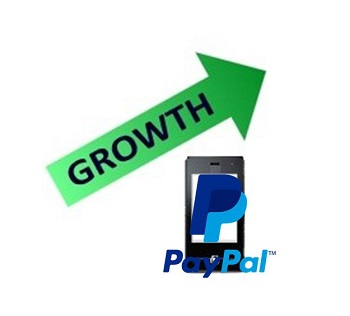At the moment, this tech is still in its pilot phase but the hope is to be able to roll it out in the future.
The Land Transport Authority (LTA), in partnership with EZ-Link and the Infocomm Development Authority of Singapore (IDA) have recently brought a trial using NFC technology transit fare to a close and are moving on with a pilot project.
This will allow transit riders to be able to use their smartphones to pay to get from point A to point B.
Compatible mobile devices with NFC technology embedded will be able to use the contactless payment readers on the MRT, LRT and public buses. This type of fare will also be available at any of the over 30,000 EZ-Link acceptance points such as at food and beverage and retail outlets in addition to many taxis. The use of an NFC SIM makes it possible to transform a cell phone into a kind of mobile device-based EZ-Link card. That allows them to use the smartphone in the same way that riders previously used their plastic cards.
The NFC technology based option also allows for additional features regarding their transit use.
 For instance, through the associated app, transit riders can also check their EZ-Link balance, view their transaction history and refill the amount they have in their account for paying their fares.
For instance, through the associated app, transit riders can also check their EZ-Link balance, view their transaction history and refill the amount they have in their account for paying their fares.
According to Chew Men Leong, LTA chief exec, “This is a milestone in the use of NFC technology in public transit in Singapore,” adding that, “We have been testing various innovative fare payment systems, and bringing these NFC SIMs and mobile phone models into the public transit ticketing environment to bring greater convenience to commuters through new and convenient ways to pay for travel.”
The trial for the use of this mobile ticketing service initially came to a close in February. That testing involved the use of the service by more than 1,000 users through 15 different NFC enabled mobile devices fitted with the near field communication SIM. All told, they registered more than 30,000 transactions with these devices and the app and a pilot is now starting in order to begin the roll out in the future.
The mobile space is driving the evolution of commerce as a whole
It has been 10 years since PayPal launched its first mobile payments service. To celebrate the anniversary of the service, the company has released information to show its exponential growth over its long history. This information is visualized in a chart that was released by PayPal earlier this week. According to PayPal CEO Dan Schulman, the mass adoption of mobile commerce has created a significant shift in the way people spend money. This has begun to change the nature of commerce with consumers relying more heavily on the digital space.
$66 billion in mobile transactions were processed by PayPal in 2015
According to PayPal, one-third of the 4.9 billion payments processed by the company last year were made through mobile devices. This accounts for some $66 billion in mobile transactions. The company believes that the growing prominence of mobile payments services will lead to a change in the commerce space over the next decade. This change may accelerate as more businesses begin supporting mobile transactions and shoppers relying on their smartphones and tablets.
Global mobile payments could reach $4 trillion by 2020
 In the United States, mobile commerce exceeded $100 billion in transactions in 2014. These transactions have continued to grow since, with more consumers becoming comfortable with the prospect of using mobile devices to make purchases. By 2020, mobile transactions could reach more than $4 trillion globally, according to IDC, a market research and analysis firm. With new payment services becoming more secure, more consumers are likely to participate in the mobile commerce space, giving PayPal and other companies new opportunities to expand their mobile initiatives.
In the United States, mobile commerce exceeded $100 billion in transactions in 2014. These transactions have continued to grow since, with more consumers becoming comfortable with the prospect of using mobile devices to make purchases. By 2020, mobile transactions could reach more than $4 trillion globally, according to IDC, a market research and analysis firm. With new payment services becoming more secure, more consumers are likely to participate in the mobile commerce space, giving PayPal and other companies new opportunities to expand their mobile initiatives.
Improved security makes consumers more comfortable with mobile commerce
Consumer adoption of mobile commerce has been heavily influenced by the security and convenience of payment services. Many had consider mobile transactions to be risky as they believed their financial information would be exposed to theft and exploitation. Indeed, some services have been impacted by major data breaches in the past, but these events have served to strengthen security in recent years, making mobile payments more attractive to consumers.
 For instance, through the associated app, transit riders can also check their EZ-Link balance, view their transaction history and refill the amount they have in their account for paying their fares.
For instance, through the associated app, transit riders can also check their EZ-Link balance, view their transaction history and refill the amount they have in their account for paying their fares.
 In the United States, mobile commerce exceeded $100 billion in transactions in 2014. These transactions have continued to grow since, with more consumers becoming comfortable with the prospect of using mobile devices to make purchases. By 2020, mobile transactions could reach more than $4 trillion globally, according to IDC, a market research and analysis firm. With new payment services becoming more secure, more consumers are likely to participate in the mobile commerce space, giving PayPal and other companies new opportunities to expand their mobile initiatives.
In the United States, mobile commerce exceeded $100 billion in transactions in 2014. These transactions have continued to grow since, with more consumers becoming comfortable with the prospect of using mobile devices to make purchases. By 2020, mobile transactions could reach more than $4 trillion globally, according to IDC, a market research and analysis firm. With new payment services becoming more secure, more consumers are likely to participate in the mobile commerce space, giving PayPal and other companies new opportunities to expand their mobile initiatives.